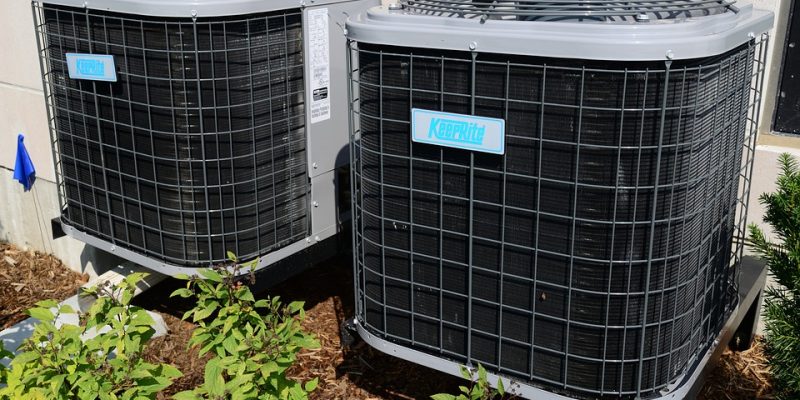Home renovation can be a pretty tasking project that requires careful consideration, planning, and attention to detail. There’s an extensive list of things to consider when planning a home renovation, but many homeowners – especially DIY enthusiasts – tend to overlook heating and cooling systems.
The underlying fact is that a change in the layout, occupancy, and usage of space during renovation should be followed by a change in the design of the HVAC system. Dream Team Heating & Air, a renowned provider of superior heating and cooling services in the Baton Rouge and Denham Springs areas, wants you to know the importance of considering Heating, Ventilation, and Air Conditioning when planning a renovation or remodeling.
6 Reasons Why You Should Consider HVAC
1. You may require additional HVAC
It’s pretty clear that enlarging a space could render the available heating and cooling systems insufficient. If you plan to add square footage to your areas as part of your renovation or remodeling process, it would be best to draw plans for additional HVAC systems.
It could mean adding extra air conditioning units, expanding the ductwork, or adding more furnaces. When planning a home renovation that would involve adding square footage to your spaces, get in touch with experts at Dream Team Heating and Air to get an informed opinion on what you may have to do regarding your heating, ventilation, and air conditioning systems.
2. A change in the usage of space changes the HVAC requirements
You may plan to change the usage of specific spaces while you renovate. For instance, bringing down walls to create an open exercise room may require a change in comfort metrics. Converting a storage space to a bedroom would affect the heating and cooling needs.
Also, if the occupancy of an area will increase after renovation, you need to ensure that your HVAC system caters to this change. The more people occupy a space, the more it heats up. This means you need less heating in cold weather and more cooling in hot weather.
3. Consider changing your replacing furnace or AC units
A home renovation project presents a great window to upgrade your old HVAC systems. Even if you feel your furnace and AC units are still pretty much functional in your renovated space, switching to fresh, brand new systems is something you should consider. Besides, it makes much sense for the HVAC technicians to come in and install the systems during renovation. This way, you won’t have to complete renovation and then come back to installing AC and furnace units.
4. Dust, dust, and debris can damage your HVAC systems
Renovation projects, even minor projects, will undoubtedly produce dust/dirt/debris. These contaminants can get into the HVAC units if you’re not sufficiently proactive. One of the critical things to keep an eye on is the furnace’s filter. A blockage of the air filter can cause a number of problems that could be potentially expensive to fix.
For a live-through renovation project, the vents to the ductwork should be closed to prevent dust from getting in. Please consult with your contractors and ask them to do the heavy work away from areas where you have HVAC unit openings. Furthermore, prepare to regularly examine and change the furnace air filters during and after a renovation.
5. You may need to modify airflow to control odors
Proper airflow designs help move air in the desired direction and prevent odors from lingering in interior spaces. In the instance of renovating a restaurant, a restroom facility, or any other space where strong odors emit from. A renovation of these spaces often modifies the existing airflow design, and it’s best you get your HVAC professionals to correct the design and keep those odors going through the proper channel.
6. A HVAC service appointment is necessary after renovation
While it is recommended that you adopt renovation practices that won’t significantly contaminate your unit, you should also schedule a service appointment after the project’s completion. This will encompass an inspection of the different heating and cooling units, with the optional examination of the ductwork. Dirt, debris, and dust from home renovations can get into the air ducts and comprise the quality of air in your interior spaces.
Ways to Protect Your HVAC During Renovation
Now that you know why you need to factor in your HVAC during renovation, what are the things you can do to protect your HVAC system during construction?
Plan out the project
As part of the preparation for the remodeling projects, consult with professionals and create a plan that’ll see that your HVAC unit is protected. Have detailed conversations about dust control and things that could be done to keep your units safe.
Cover your vents
One of the things you can do to keep out dust particles is to close the vents in the areas being renovated and keep them covered. Note that closing the vents while an HVAC unit is active will put some strain on the unit.
Take the construction outdoors
Depending on the peculiarities of the renovation project, you may want to take some of the construction work outside. Not all renovation processes will produce dust, but if your project requires you to do a lot of cutting, sanding, and other things that could produce dust, it would be best if you do the heavy work outside.
Switch off the system
To avoid the potential strain that could result from closing your vents while the system is active, you could just switch off the entire system. Moreover, there would be instances where you can’t take construction outdoors. You can reduce the dust circulating through the system by turning off the system.
Verdict
HVAC systems can be relatively expensive. So, if you’re planning a remodeling or renovation on your property, you should take precautions to protect your heating, ventilation, and air conditioning units. Before you start the project, get in touch with a professional and map out plans to preserve, expand or change your units as dictated by the specifics of the renovation project.




















